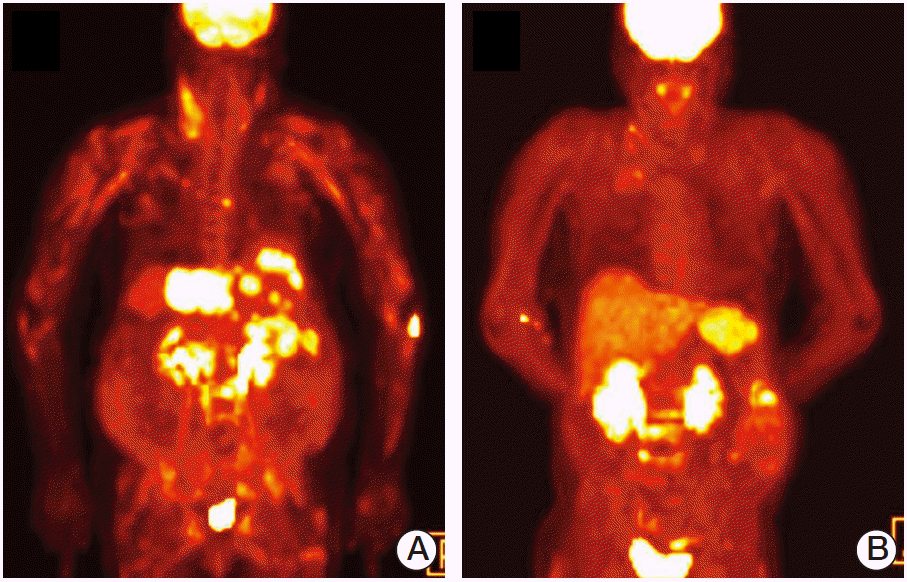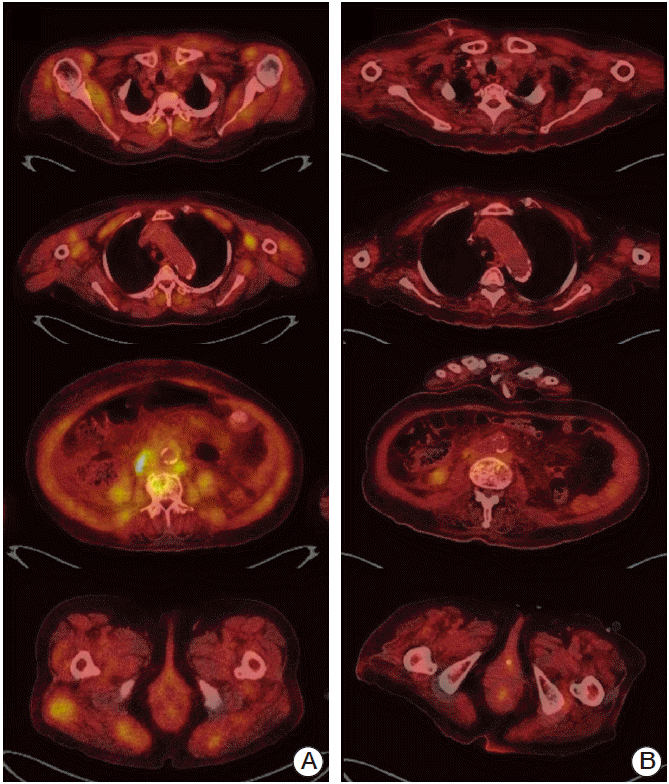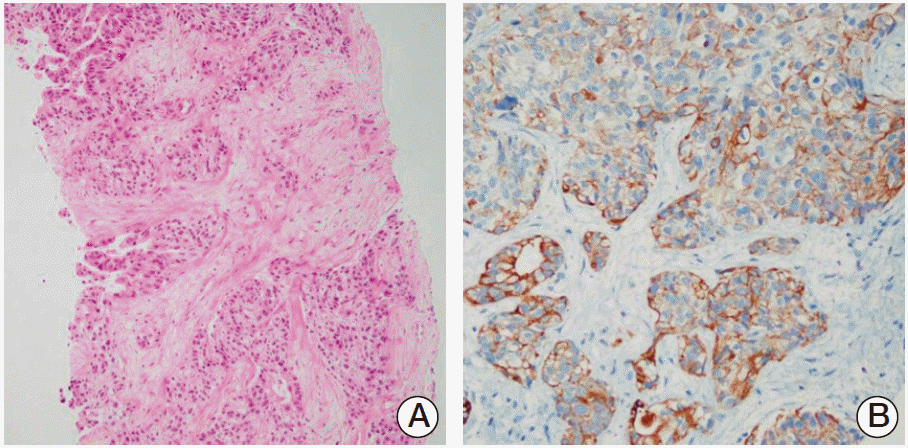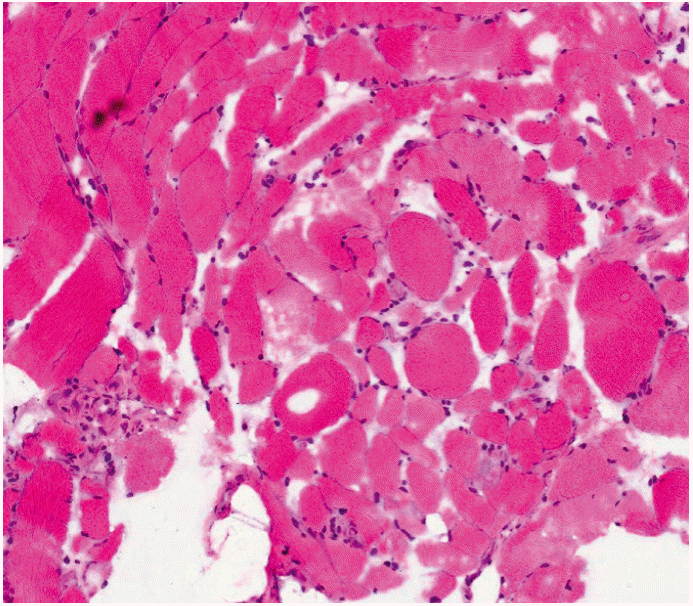1. Targoff IN. Dermatoniyositis and polymyositis. Curr Probl Dermatol. 1991; 3:134–80.

2. Hill CL, Zhang Y, Sigurgeirsson B, Pukkala E, Mellemkjaer L, Airio A, et al. Frequency of specific cancer types in dermatomyositis and polymyositis: a population-based study. Lancet. 2001; 357:96–100.

3. Knowles BP, Corcoran NM, Usatoff V. Reading the signs: occult metastatic cholangiocarcinoma detected by full-body screening in dermatomyositis. ANZ J Surg. 2007; 77:1026–7.

4. Choi SH, Kim HS, You MR, Kim MW. A case of dermatomyositis associated with infiltrative intrahepatic cholangiocarcinoma. J Korean Rheum Assoc. 2010; 17:76–80.

5. Horie Y, Yamada M, Nakai K, Kawasaki H, Hirayama C, Matsui K, et al. Combined hepatocellular-cholangiocarcinoma associated with dermatomyositis. J Gastroenterol Hepatol. 1989; 4:101–4.

6. Warburg O. On the origin of cancer cells. Science. 1956; 123:309–14.

7. Al-Nahhas A, Jawad AS. PET/CT imaging in inflammatory myopathies. Ann N Y Acad Sci. 2011; 1228:39–45.

8. Mummadi V, Arabi M, Jakubowski E, Bou-Assaly W, Geatti O, Gross M, et al. Abnormal 18F-fluorodeoxyglucose (FDG) uptake in muscle tumors on PET-CT: a pictorial atlas of pathologic findings. J Nucl Med. 2010; 51(Suppl 2):1090.
9. Casciola-Rosen L, Nagaraju K, Plotz P, Wang K, Levine S, Gabrielson E, et al. Enhanced autoantigen expression in regenerating muscle cells in idiopathic inflammatory myopathy. J Exp Med. 2005; 201:591–601.

10. Kaji K, Fujimoto M, Hasegawa M, Kondo M, Saito Y, Komura K, et al. Identification of a novel autoantibody reactive with 155 and 140 kDa nuclear proteins in patients with dermatomyositis: an association with malignancy. Rheumatology (Oxford). 2007; 46:25–8.

11. Yoshinaga A, Hayashi T, Ishii N, Ohno R, Watanabe T, Yamada T. Successful cure of dermatomyositis after treatment of nonseminomatous testicular cancer. Int J Urol. 2005; 12:593–5.

12. Takahashi F, Tsuta K, Nagaoka T, Miyamoto H, Saito Y, Amano H, et al. Successful resection of dermatomyositis associated with thymic carcinoma: report of a case. Surg Today. 2008; 38:245–8.

13. Gunawardena H, Betteridge ZE, McHugh NJ. Myositis-specific autoantibodies: their clinical and pathogenic significance in disease expression. Rheumatology (Oxford). 2009; 48:607–12.

14. Noss EH, Hausner-Sypek DL, Weinblatt ME. Rituximab as therapy for refractory polymyositis and dermatomyositis. J Rheumatol. 2006; 33:1021–6.
15. Hengstman GJ, ter Laak HJ, Vree Egberts WT, Lundberg IE, Moutsopoulos HM, Vencovsky J, et al. Anti-signal recognition particle autoantibodies: marker of a necrotising myopathy. Ann Rheum Dis. 2006; 65:1635–8.







 PDF
PDF Citation
Citation Print
Print




 XML Download
XML Download